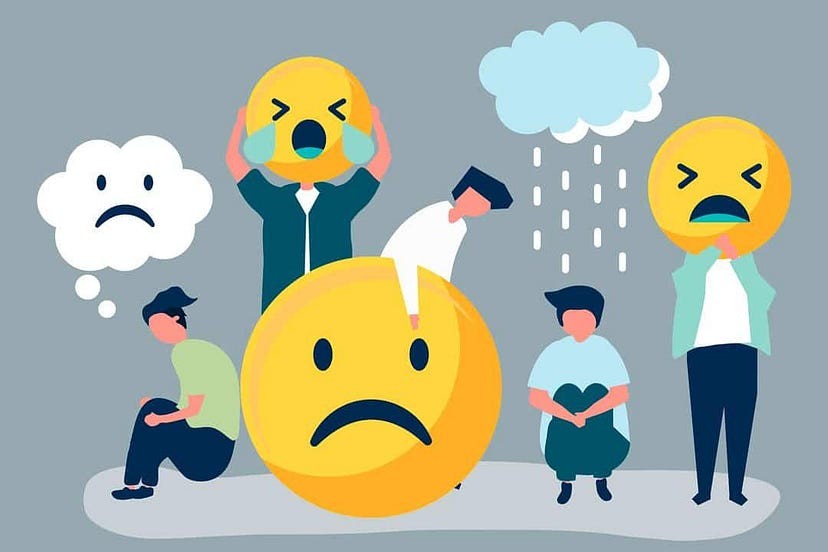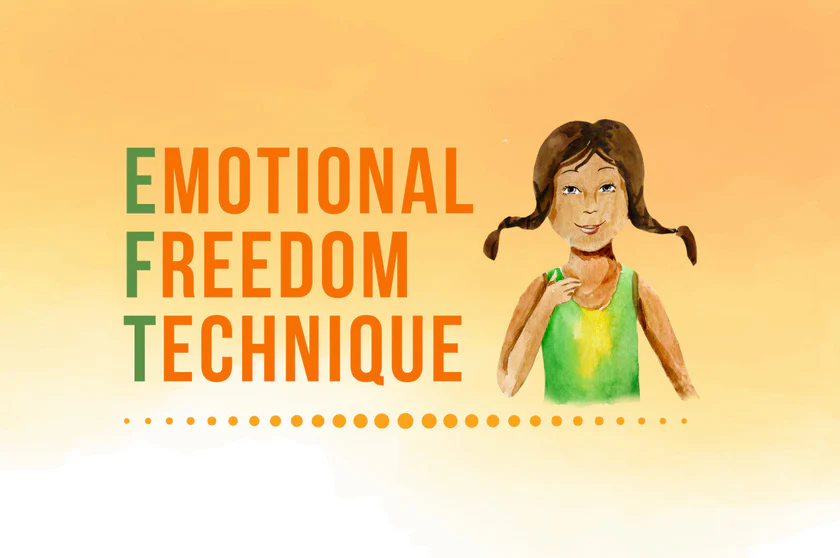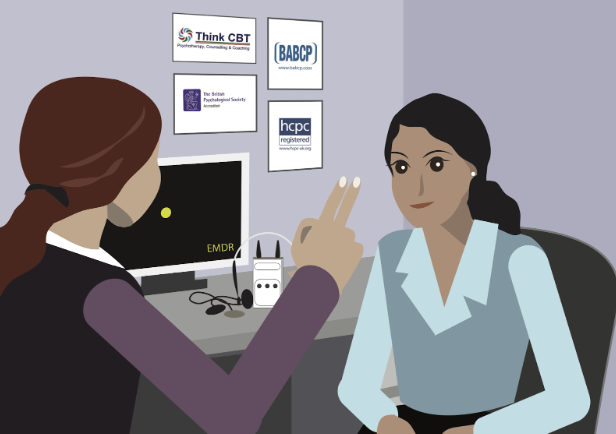Everyone experiences negative emotions from time to time—anxiety, anger, sadness, or even fear. These feelings can affect our daily lives, whether at work, in relationships, or during personal moments of reflection. While it’s normal to feel this way, learning how to manage and process these emotions is essential for mental and emotional well-being.
Among the many self-help tools available today, two simple and highly effective techniques are worth exploring: EFT (Emotional Freedom Technique) and EMDR (Eye Movement Desensitization and Reprocessing). These methods can help you work through almost any negative feeling—from mild stress to deeper emotional struggles like PTSD and depression—all from the comfort of your own home.
What is EFT (Emotional Freedom Technique)?
EFT, also known as tapping, is a gentle method that involves tapping on specific points on your body while focusing on a particular emotion or thought. These tapping points are based on meridian points used in traditional Chinese medicine.
The goal is to help the body and mind feel safe, release tension, and reduce emotional distress. When practiced regularly, EFT can bring relief from a wide range of emotional challenges including anxiety, fear, sadness, and anger.
How EFT Works:
- Identify the issue – Pick one emotion or situation bothering you.
- Create a setup phrase – For example: “Even though I feel anxious, I accept how I feel.”
- Tap on specific points – Side of the hand, top of the head, eyebrow, side of the eye, under the eye, under the nose, chin, collarbone, and underarm.
- Repeat statements – Say how you feel as you tap each point.
- Check your feelings – Rate your emotion before and after to see any changes.
Real-Life Example:
Sara, a university student, used to feel nervous before presentations. After practicing EFT a few times, she noticed that her anxiety was much more manageable, and she could speak with more confidence.
What is EMDR (Eye Movement Desensitization and Reprocessing)?
EMDR is a well-researched psychological method originally developed to treat people with PTSD. It is now commonly used to help individuals overcome fears, emotional trauma, and persistent negative thoughts.
In EMDR, you recall a painful memory while following side-to-side movements, such as watching a moving object or listening to alternating sounds. This helps the brain process the memory in a healthier way so that it no longer feels overwhelming.
Many people report that after a few sessions, painful memories become less intense, and their emotional responses become more balanced. EMDR is now used to support healing in cases of depression, phobias, grief, and long-term stress.
How EMDR Works:
- Recall a stressful memory – Bring the event to mind.
- Engage in bilateral stimulation – Follow a moving object with your eyes or listen to alternating sounds.
- Notice your emotions – Observe how your thoughts and feelings change.
- Repeat – Continue until the memory feels less distressing.
Real-Life Example:
Ali avoided driving after a car accident. Using an EMDR app with eye movement exercises, he processed the memory safely at home. After a few sessions, he began to feel less fearful and was able to drive again with more ease.
EFT vs EMDR: Which One is Right for You?
Both EFT and EMDR are excellent tools, and many people benefit from using them together. Each has its own strengths:
- EFT is suitable for everyday emotional challenges like anxiety, stress, or moments of anger.
- EMDR is often better for more intense emotional wounds such as trauma, PTSD, and long-standing painful memories.
Anger – QuickTapping with Brad Yates
If you’re dealing with ongoing stress or sudden emotional discomfort, EFT might be a good place to start. If your distress is rooted in past trauma or deeper emotional pain, EMDR may be more appropriate.
Some people even use EFT first to calm down, then follow up with EMDR for deeper healing.
Why These Tools Are Effective
The strength of both EFT and EMDR lies in their ability to calm the body’s fight-or-flight response. When we face emotional stress, our nervous system reacts as if we are in danger. These tools help signal to the brain that we are safe, allowing the body to relax and heal.
Unlike simply ignoring emotions or trying to “think positive,” EFT and EMDR allow us to gently face and process what we feel. This is key to moving forward instead of staying stuck.
Scientific studies and personal experiences show these tools are helpful for issues like depression, trauma, phobias, and emotional triggers. While they may not replace professional therapy for everyone, they are valuable steps toward emotional well-being.
Releasing Emotional Pain – Tapping with Brad Yates
How to Start Using EFT and EMDR
EFT in 5 Easy Steps:
- Choose one emotion (e.g., “I feel stressed about work.”)
- Rate the intensity of the feeling from 0 to 10.
- Say a setup phrase:
“Even though I feel stressed, I accept myself.” - Tap gently on the main points while repeating the feeling.
- After a few rounds, rate the emotion again to check progress.
Feeling Shame – Tapping with Brad Yates
EMDR-Inspired Self-Help:
- Think of a memory or thought that causes mild to moderate distress.
- Use a mobile app or video that guides eye movement or sound.
- Focus on the memory while following the side-to-side motion.
- Pause and observe how your emotion changes.
- Continue as needed until you feel more at ease.
Note: If a memory is very painful or feels overwhelming, consider working with a certified EMDR therapist for safety and support.
When to Use These Techniques
You can use EFT and EMDR for various emotional needs, such as:
- Preparing for a job interview or exam
- Managing daily anxiety or work-related stress
- Reducing feelings of anger or frustration
- Processing grief, sadness, or a past breakup
- Healing emotional pain caused by PTSD or trauma
- Releasing long-held emotions linked to depression
These tools can be used any time you feel stuck or overwhelmed. They empower you to take care of your emotional health without needing complex equipment or medication.
Final Thoughts
Emotional health is just as important as physical health. Techniques like EFT and EMDR are simple, proven tools that can help you manage and overcome many emotional struggles, from daily stress to more serious challenges like depression and PTSD.
Whether you’re facing anxiety, processing anger, or recovering from a difficult experience, these tools can support you. With a little practice and patience, you can regain a sense of calm, confidence, and control.
Your healing journey starts with one small step—and tools like EFT and EMDR make that step easier to take.







